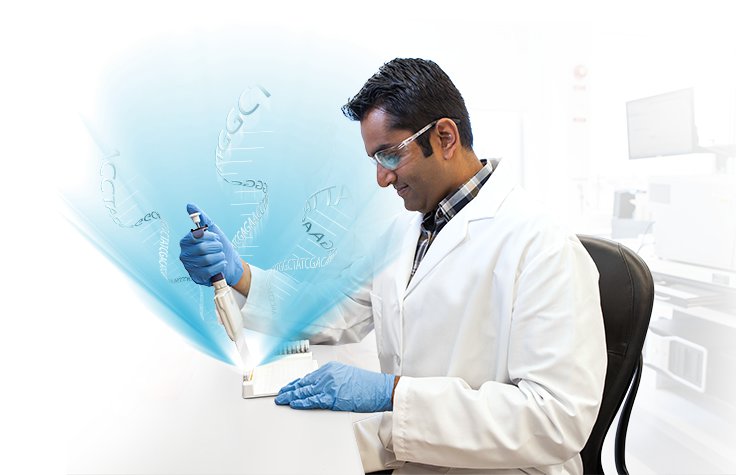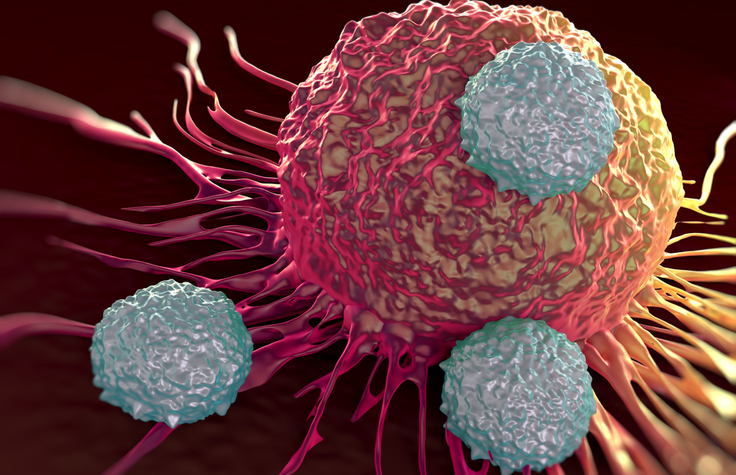RNA-Seq and Microarray Technology Comparison
RNA-Seq Technology Overview
RNA sequencing (RNA-Seq) technology enables rapid profiling and deep investigation of the transcriptome, for any species. This approach offers a number of advantages compared to microarray analysis, a legacy technology often used in gene expression studies.

Benefits of RNA-Seq vs. Microarray Technology
Ability to detect novel transcripts: Unlike arrays, RNA-Seq technology does not require species- or transcript-specific probes. It can detect novel transcripts, gene fusions, single nucleotide variants, indels (small insertions and deletions), and other previously unknown changes that arrays cannot detect.1,2
Wider dynamic range: With array hybridization technology, gene expression measurement is limited by background at the low end and signal saturation at the high end. RNA-Seq technology produces discrete, digital sequencing read counts, and can quantify expression across a larger dynamic range (>105 for RNA-Seq vs. 103 for arrays).1,2,3
Higher specificity and sensitivity: Compared to microarrays, RNA-Seq technology can detect a higher percentage of differentially expressed genes, especially genes with low expression.4-6
Simple detection of rare and low-abundance transcripts: Sequencing coverage depth can easily be increased to detect rare transcripts, single transcripts per cell, or weakly expressed genes.
Transitioning from Arrays to RNA-Seq
Access a detailed comparison of microarray and RNA-Seq technologies, from the perspective of a sequencing service provider.
“mRNA-Seq offers improved specificity, so it’s better at detecting transcripts, and specifically isoforms, than microarrays. It’s also more sensitive in detecting differential expression and offers increased dynamic range.”
Steve McPhail
President and Chief Executive Officer, Expression Analysis
User-Friendly Data Analysis Tools
In the past, next-generation sequencing (NGS) data analysis required extensive bioinformatics expertise, presenting a major hurdle to adoption of RNA sequencing technology by biologists. The latest user-friendly tools vastly simplify the analysis process, providing accessible solutions for researchers without a bioinformatics background.
Benchtop RNA-Seq Technology
The NextSeq 2000 System supports a broad range of conventional and emerging applications, from transcriptome sequencing to exome sequencing, single-cell profiling, and more.
RNA-Seq Grants Outpace Array Grants
The portion of NIH grant funding allocated to new RNA sequencing vs. gene expression microarray-inclusive grants has been trending towards RNA-Seq technology for the last several years, and now constitutes the majority. Download our transcriptomics eBook to see the evidence.
Empowering Transcriptomics
This eBook discusses how NGS is advancing gene expression research, and includes a section on the advantages of RNA-Seq over arrays.
RNA-Seq Experimental Considerations
Each RNA sequencing experiment type—whether it’s gene expression profiling, targeted RNA expression, or small RNA analysis—has unique requirements for read length and depth. This bulletin reviews experimental considerations and offers resources to help with study design.

From Microarrays to RNA-Seq for Gene Expression Studies
Annika Sonntag, PhD and her team originally used microarrays to measure RNA expression, but needed to see exon-specific RNA expression as well. After comparing many technologies, they chose Illumina NGS for their gene expression studies.

Additional Information
Explore a wide variety of RNA-Seq methods, from mRNA-Seq to specialized methods for analyzing RNA from cancer samples and more.
Our enhanced RNA-Seq library prep portfolio offers rapid turnaround time, broad study flexibility, and sequencing scalability.
Interested in receiving newsletters, case studies, and information from Illumina based on your area of interest? Sign up now.
References
- Wang Z, Gerstein M, Snyder M. RNA-Seq: a revolutionary tool for transcriptomics. Nat Rev Genet. 2009;10:57–63.
- Wilhelm BT, Landry JR. RNA-Seq—quantitative measurement of expression through massively parallel RNA sequencing. Methods. 2009;48:249–57.
- Zhao S, Fung-Leung WP, Bittner A, and Ngo K, Liu X. Comparison of RNA-Seq and microarray in transcriptome profiling of activated T cells. PLoS One. 2014;16;9(1):e78644.
- Wang C, Gong B, Bushel PR, et al. The concordance between RNA-seq and microarray data depends on chemical treatment and transcript abundance. Nat Biotechnol. 2014;32:926–932.
- Li J, Hou R, Niu X, et al. Comparison of microarray and RNA-Seq analysis of mRNA expression in dermal mesenchymal stem cells. Biotechnol Lett. 2016;38:33–41.
- Liu Y, Morley M, Brandimarto J, et al. RNA-Seq identifies novel myocardial gene expression signatures of heart failure. Genomics. 2015;105:83–89.